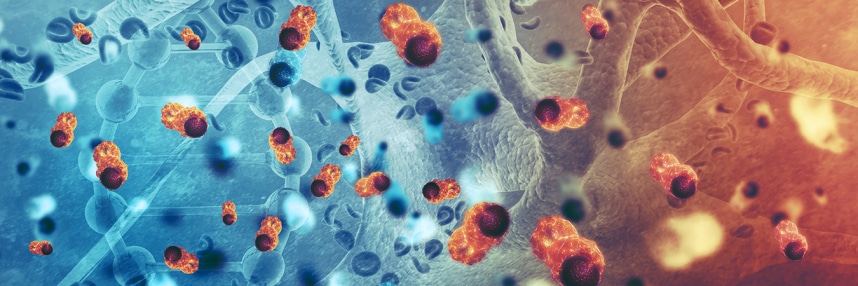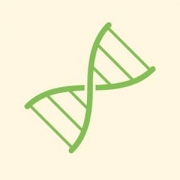Genomic test supports next-generation cancer drugs
Promising new cancer treatments are emerging, but how does genomics help us identify the patients who need them?
A new test that can identify the presence of a gene fusion linked to tumour growth will be introduced into the NHS Genomic Medicine Service this year, according to the UK’s chief scientific officer Professor Dame Sue Hill, who provided details during this year’s Festival of Genomics & Biodata.
The test follows the approval of two ‘histology-independent’ drugs – larotrectinib and entrectinib, which are prescribed based on the molecular or genomic characteristics of the tumour, rather than its location in the body.
Both drugs work in cancers that have a specific genomic characteristic: a gene fusion called NTRK, found in around 1% of all solid tumours.
What are gene fusions?
A gene fusion is as it sounds: two or more genes – or parts of genes – that have joined together, in this case, in the tumour’s genome. This is usually the result of a chromosomal rearrangement: when broken DNA is ‘repaired’ but the wrong ends get stuck back together. This can lead to two genes running together and being transcribed as a single sequence, producing a hybrid protein.
The first gene fusion that was discovered, BCR-ABL1, occurs when a piece of DNA is swapped between the ends of chromosomes 9 and 22. It was spotted long before DNA sequencing – the difference in the chromosome lengths was observed under the microscope in cells from a person with leukaemia. This translocation is present in almost all cases of chronic myeloid leukaemia (CML) and is found in some other types of leukaemia as well.
BCR-ABL1 is the target for tyrosine kinase inhibitor cancer therapies, such as imatinib, which have dramatically improved the prognosis of patients with CML.
But BCR-ABL1 is just one of many gene fusions that could be targeted by future drug treatments. The Catalogue of Somatic Mutations in Cancer (COSMIC), based at the Wellcome Sanger Institute in Cambridge, currently lists over 300 known gene fusions that have links to a wide variety of cancers.
NTRK fusions and cancer growth
NTRK gene fusions are found in the genome of over 20 cancer types, including breast, brain, colorectal, skin and thyroid cancers and sarcomas.
These fusions are in genes that code for a group of receptor proteins known as tyrosine receptor kinases (TRKs). There are three main proteins in the group: TRKA, encoded by the gene NTRK1 on chromosome 1; TRKB, encoded by NTRK2 on chromosome 9; and TRKC, encoded by NTRK3 on chromosome 15. These genes are normally involved in the development of the central and peripheral nervous systems.
Fusions involving these genes can produce abnormal proteins known as TRK fusion proteins, which promote cancer growth by driving signalling pathways involved in tumour cell proliferation and survival.
Cancers with these kinase fusions often depend on this signalling to grow and survive, which is why targeting these fusions can be extremely effective – and that is exactly what larotrectinib and entrectinib do. But how can we test for these types of gene fusions, and find patients who would benefit most from these new drugs?
The power of testing
Following the approval of larotrectinib and entrectinib by NICE in 2020, plans were put in place to roll out a test that could look for NTKR gene fusions, in order to establish which patients could be helped by these targeted drugs.
Testing is now being phased in and is expected to ramp up over the course of the year, with the aim of achieving a target rate of 30,000 tests per year by 2022. The test will target those who are potentially eligible for histology-independent drugs at the point where standard therapies have failed.
The testing and identification of more patients will allow faster access to targeted treatments and better outcomes for those affected, who will have often exhausted all other options available to them.
Follow this blog for further updates on the test as it is introduced across the country.
–









